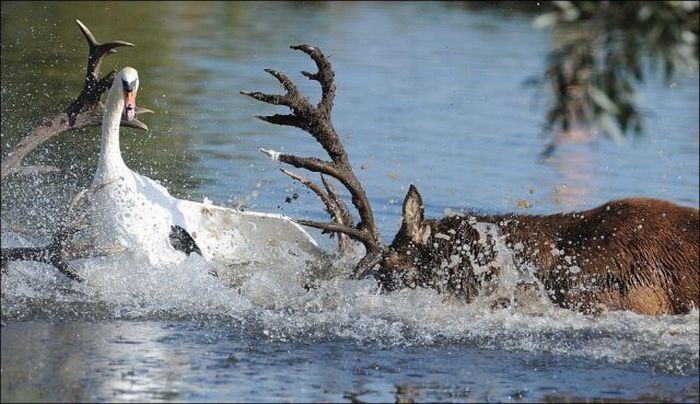|
|
Deer Against A Swan
|
Swans feed in the water and on land. They are almost entirely herbivorous, although small numbers of aquatic animals may be eaten. In the water food is obtained by up-ending or dabbling, and their diet is composed of the roots, tubers, stems and leaves of aquatic and submerged plants.
Swans form monogamous pair bonds that last for many years, and in some cases these can last for life. Modern genetic techniques are starting to reveal that 'divorces' are more common than previously thought, as is mating with other swans outside of the social pairing, without breaking the social pair bond. These bonds are maintained year round, even in gregarious and migratory species like the Tundra Swan, which congregate in large flocks in the wintering grounds. The nest is on the ground near water and about a metre across. Unlike many other ducks and geese the male helps with the nest construction. Average egg size (for the mute swan) is 113×74 mm, weighing 340 g, in a clutch size of 4 to 7, and an incubation period of 34–45 days. With the exception of the dendrocygninaes they are the only anatids where the males aid in incubating the eggs.
Mute swans have been observed to display homosexual or transgender behavior.
|
|









